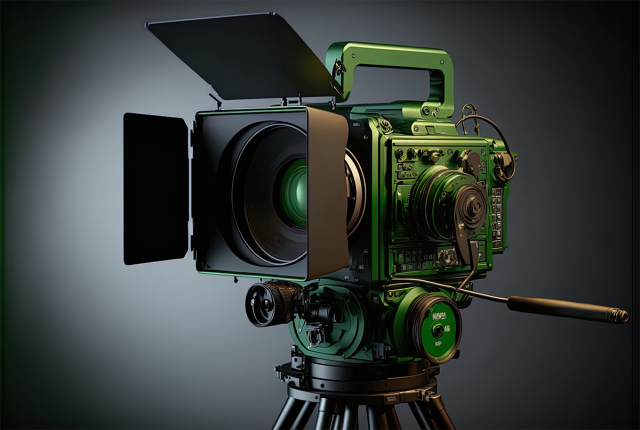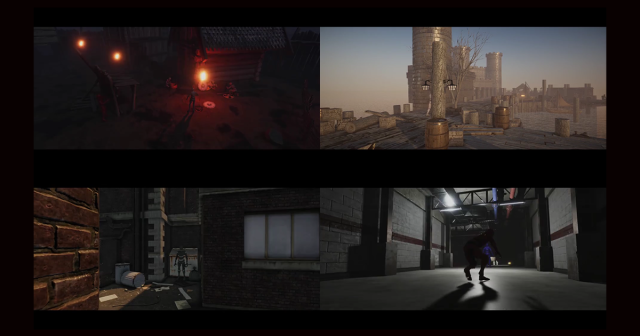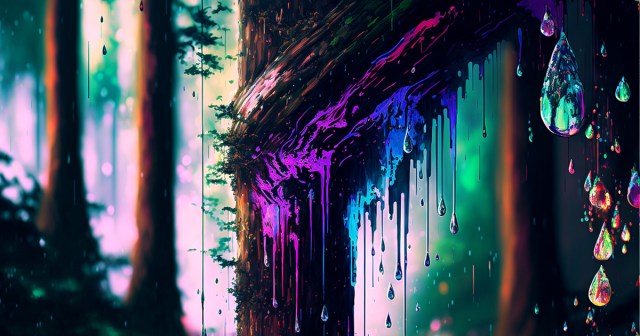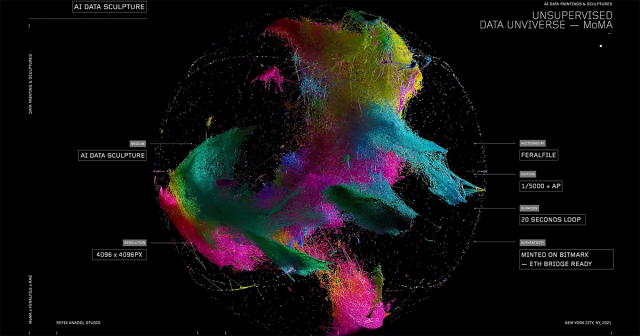
READ MORE: A glimpse into the future of cinema: The ultimate guide to A.I. art for film/animation/VFX (Pinar Seyhan Demirdag)
Independent filmmakers are experimenting with AI tools today. While they are not yet ready for their big screen close-up, it won’t be long until these technologies become widely adopted in Hollywood.
The most high-profile text-to-image AI is DALL-E 2, released by OpenAI. The model does not offer motion picture sequences — but the odds are that it soon will. OpenAI is likely working on this as we speak.
Los Angeles-based director Paul Trillo has been creating stop-motion animations using DALL-E, and explains how it can be done in this twitter thread:
AI art is in its infancy and making fledgling attempts at “temporal coherence,” the ability to make something move as we expect it to in film and video (not forgetting that film is a set of still images replayed 24 times a second).
Deforum is a text-to-motion AI tool based on the AI model Stable Diffusion by Stability AI. AI artist Michael Carychao has used it to show how AI tools can re-create famous actors:
“In a couple of years, we’ll be able to write ‘Brad Pitt dancing like James Brown’ and be able to have a screen-ready coherent result,” Pinar Seyhan Demirdag, co-founder of AI-based content developer Seyhan Lee, predicts in her blog at Medium.
Another example using Deforum is provided by an artist known as Pharmapsychotic. The animated sample posted to Twitter is claimed to be raw output with no post-processing or interpolation:
“Give it a couple of years, and you’ll be able to film a scene of four random people walking down an aisle, and to turn them into Dorothy and the gang in the Wizard of Oz,” Seyhan Demirdag comments. “Arguably, you can do this right now, but it will be wonky, smudgy, and missing 8K details, so not ready for the mass audience.”
There are two ways of transferring a style right now. One way is with a pre-defined style, like a Van Gogh painting, for example. The other is using text-to-image based models such as Disco Diffusion and VQGAN+CLIP, where you guide the style with words, referred to as “prompts.”
“These prompts are your most significant creative assets, and many people who make art with text-to-image tools also call themselves ‘prompt artists.’ “ she says.
There are even sites suggesting the best prompts to work with specific AI — like the DALL-E 2 Prompt Book.
Considerable work is being done to incorporate generative art models into games engines.
Daniel Skaale, who works for Khora VR, has posted a sample on Twitter where he carried a 2D image he had created into the text-to-image AI Midjourney from the Unity games engine.
Generating real-time imagery in Unity or Unreal Engine remains an unexplored territory with huge potential, Seyhan Demirdag writes.
Face Replacement
Twitter user Todd Spence posted a mashup of Willem Dafoe as Julia Roberts in Pretty Woman. While it was just for fun, examples like this — using AI apps like Reface — give us a glimpse into how AI will help optimize production in future.
“Soon, studios will simply need to rent Brad Pitt’s face value rights for him to appear in the upcoming blockbuster film without having to leave the comfort of his couch,” Seyhan Demirdag comments.
Similar models have already been used. For example, Focus Pictures’ Roadrunner: A Film About Anthony Bourdain used deepfake technology to recreate Bourdain’s voice to have it say things he never actually said. This was controversial mainly because the AI wasn’t acknowledged up front by the filmmakers. The Andy Warhol Diaries also used AI to mimic Warhol’s narration, but since this was credited in the title sequence the Netflix documentary received applause for its innovation.
READ MORE: Crossing the Line: How the “Roadrunner” Documentary Created an Ethics Firestorm (NAB Amplify)
READ MORE: Pop Will Eat Itself: The Ultimate Manufactured Warhol (NAB Amplify)
As with any other technology in its infancy, AI art still misses temporal coherence — our capacity to make jumping jacks or walk down the street.
“Right now, you can produce mind-bending, never-before-seen sequences with AI, but you cannot do everything (yet),” Seyhan Demirdag says.
“In a few years, we’ll be able to generate coherent and screen-ready full features that are entirely generated. If you are a producer, director, studio owner, or VFX artist who wants to stay ahead of the curve, now is the time to invest in this technology; otherwise, your competition will be generating headlines, not you.”
Fabian Stelzer’s “Salt” is the World’s First Fully AI-generated Multiplot “Film”
By Abby Spessard
READ MORE: This guy is using AI to make a movie — and you can help decide what happens next (CNN Business)
Fabian Stelzer is creating a sci-fi movie, Salt, using artificial intelligence coupled with crowdsourced narrative twists. On Twitter, Salt is billed as “the world’s first fully AI-generated multiplot ‘film’ — a Web6 internet adventure where your choices create a 1970s lo-fi sci-fi universe.”
While Stelzer may not be a filmmaker by trade, Rachel Metz at CNN Business says his use of AI tools to create a series of short films “points to what could be a new frontier for making movies.”
“Stelzer creates images with image-generation tools such as Stable Diffusion, Midjourney and DALL-E 2. He makes voices mostly using AI voice generation tools such as Synthesia or Murf. And he uses GPT-3, a text-generator, to help with the script writing,” Metz details.
After watching installments, Salt viewers can vote on story beats to determine what will happen next. Selzer has hopes of one day cutting the “play-to-create experiment” into a feature-length film.
“In my little home office studio I can make a ‘70s sci-fi movie if I want to,” he says. “And actually I can do more than a sci-fi movie. I can think about, ‘What’s the movie in this paradigm, where execution is as easy as an idea?’ “
Salt’s plot is still fairly vague — at least for now, as Metz notes — but Stelzer continues to release short clips and images on Twitter. “The resulting films are beautiful, mysterious, and ominous,” she writes. “So far, each film is less than two minutes long, in keeping with Twitter’s maximum video length of two minutes and 20 seconds. Occasionally, Stelzer will tweet a still image and a caption that contribute to the series’ strange, otherworldly mythology.”
The genesis for Salt emerged from Stelzer’s experiments in the text-to-image generator Midjourney. Working from his prompts, the system generated images he said “felt like a film world,” depicting “alien vegetation, a mysterious figure lurking in the shadows, and a weird-looking research station on an arid mining planet.”
Stelzer said, “I saw this in front of me and was like, ‘Okay, I don’t know what’s happening in this world, but I know there’s lots of stories, interesting stuff. I saw narrative shades and shadows of ideas and story seeds.”
But Selzer admits that he’s not entirely sure whether the idea he has for Salt will work, partially because of community involvement driving the project to deviate wildly from what he had initially planned. “The charm of the experiment to me, intellectually, is driven by the curiosity to see what I as the creator and the community can come up with together.”
AI ART — I DON’T KNOW WHAT IT IS BUT I KNOW WHEN I LIKE IT:
Even with AI-powered text-to-image tools like DALL-E 2, Midjourney and Craiyon still in their relative infancy, artificial intelligence and machine learning is already transforming the definition of art — including cinema — in ways no one could have ever predicted. Gain insights into AI’s potential impact on Media & Entertainment in NAB Amplify’s ongoing series of articles examining the latest trends and developments in AI art
- What Will DALL-E Mean for the Future of Creativity?
- Recognizing Ourselves in AI-Generated Art
- Are AI Art Models for Creativity or Commerce?
- In an AI-Generated World, How Do We Determine the Value of Art?
- Watch This: “The Crow” Beautifully Employs Text-to-Video Generation




